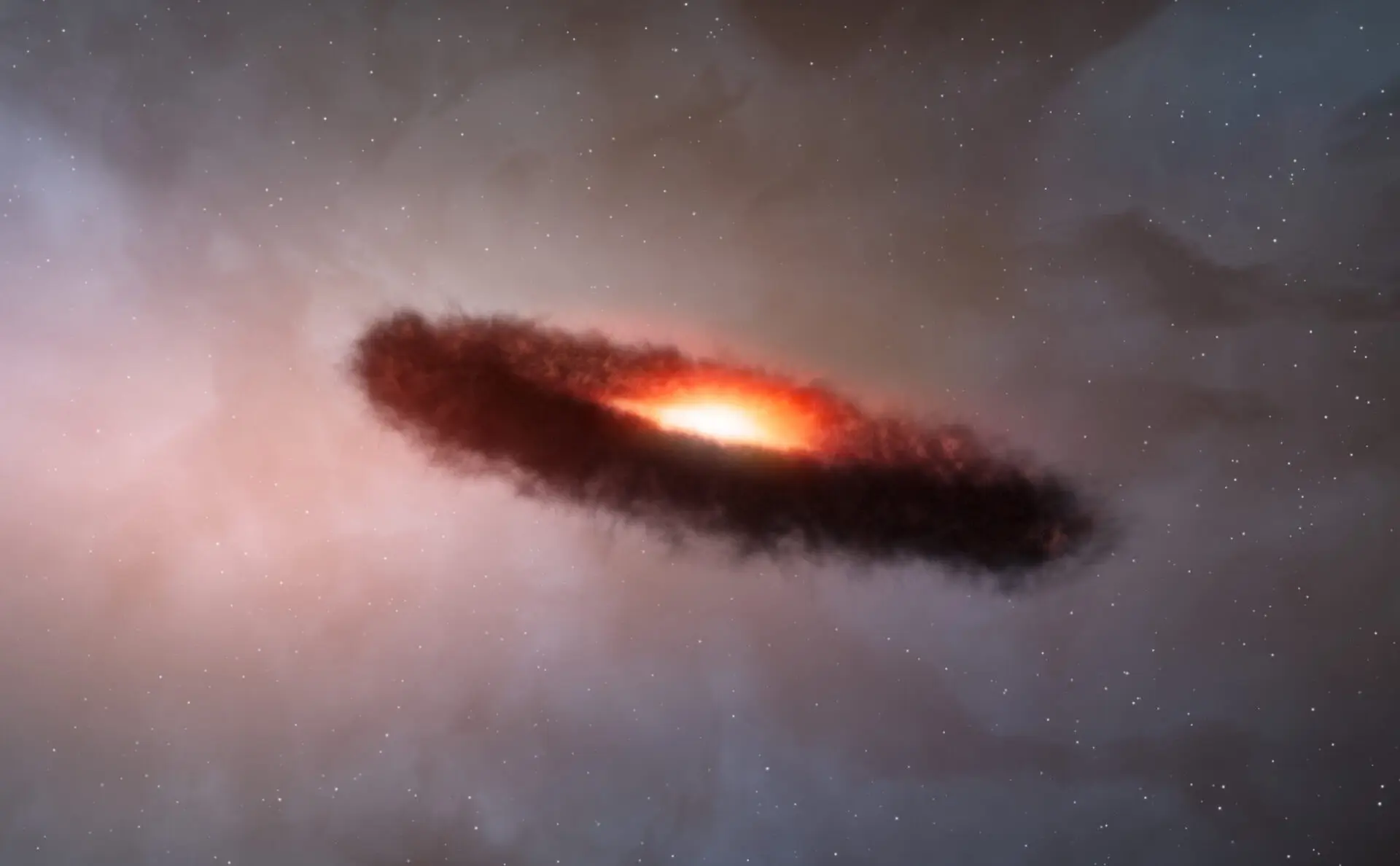Disc of gas and cosmic dust around a brown dwarf
This artist’s impression shows the disc of gas and cosmic dust around a brown dwarf.This artist’s impression shows the disc of gas and cosmic dust around a brown dwarf.
Rocky planets are thought to form through the random collision and sticking together of what are initially microscopic particles in the disc of material around a star. These tiny grains, known as cosmic dust, are similar to very fine soot or sand. Astronomers using the Atacama Large Millimeter/submillimeter Array (ALMA) have for the first time found that the outer region of a dusty disc encircling a brown dwarf — a star-like object, but one too small to shine brightly like a star — also contains millimetre-sized solid grains like those found in denser discs around newborn stars. The surprising finding challenges theories of how rocky, Earth-scale planets form, and suggests that rocky planets may be even more common in the Universe than expected.
Credit: ALMA (ESO/NAOJ/NRAO)/M. Kornmesser (ESO)
